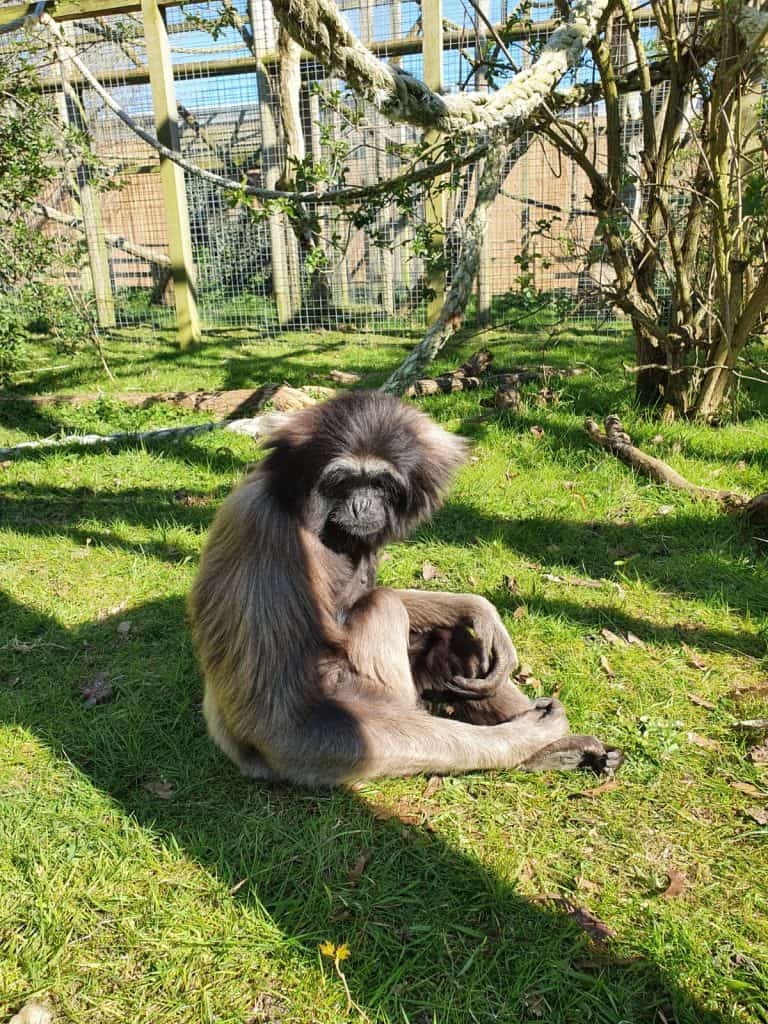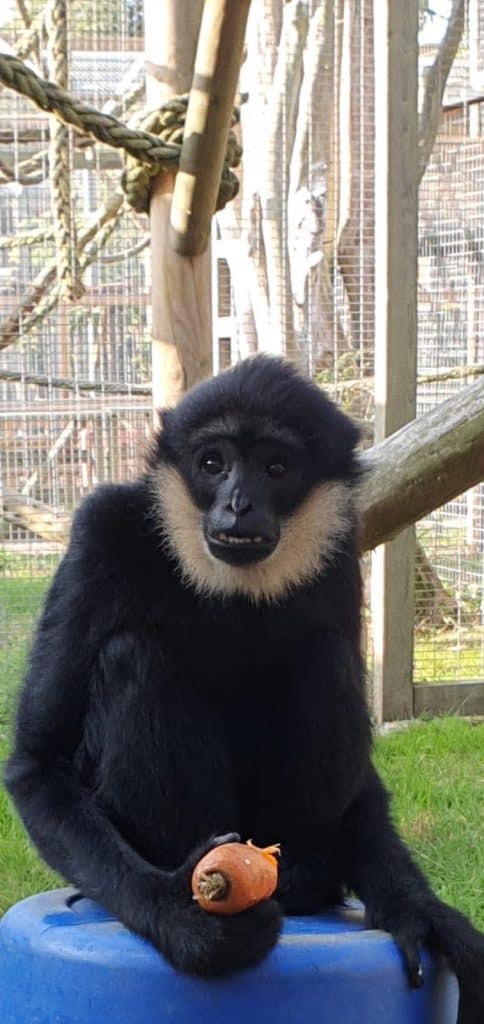Hey everyone, this week my blog will be focused on another of my favourite species of primates, the gibbons! But more specifically, gibbon songs and calls.
All animals in the natural world will have a way of communicating with other species, individuals of their own species and with their environment. This can come in many different forms, whether it is visual (animals making displays to make themselves larger or to impress a mate), olfactory (using scents and smells), tactile (through touch) or vocally (making noises to convey a message). Most animals will use vocal communication in many different scenarios from defending a territory, warding off a potential rival or to attract a mate. However, there are not a lot of animals that can compete with the song of a gibbon!
Gibbons
There are 19 recognized species of gibbon (you can find out more about these in my previous blog) and they occupy different habitats throughout south-east Asia ranging from Borneo and Sumatra, north-eastern India to southern China. Gibbons are not actually monkey’s, as they are often mistaken for here at the park. They are in fact more closely related to the Great Apes such as chimps and orangs and belong to a unique family group called Lesser Apes. They are all tailless and can have very striking differences in coat colours between males and females. But what really sets them apart is that they are primarily monogamous (usually will mate and stay as a pair for a long time) and they have very complex vocal communication including “singing”!!
The song bouts of gibbons are one of the most spectacular sounds of the rainforests throughout Asia. Both males and females will perform these complex singing sessions high up in the tree canopies and can be heard up to several miles away and differ massively between males and females.
So why do gibbons sing?
Mostly, it is thought to alert other gibbons close to their location of their presence and their whereabouts. But even more specifically it is thought that males singing bouts tend to be dependant on the density of the population. Primarily younger males who are just maturing and searching for a mate ‘sing’. Before males have mated and paired with a female they will tend to sing first thing in the morning from their beds, usually before sunrise and consistently sing through to dawn, starting as slow and quiet warbles, growing to very loud elaborate songs.

It was once believed that mated males would sing to defend his female’s territory, but it is more likely that he is singing to ward off any attentions from solo males in the area. Paired males will sing more frequently depending on the population size, if there are a lot of gibbons in the area, they will sing for longer and more often. However, if the population is low and spread out then it is known for them not to sing at all! Unfortunately, this can be a very costly event. It can take its toll on their physical health, so they need to be in their peak physical fitness to keep a prolonged song going. If the weather changes or they are lacking high energy fruits, males will sing less and less.
Females are very different in their tactics when singing. If she is not mated she will usually wait until mid-morning to perform her singing sessions, which do not last as long as the males’ bouts. The length of their song may be shorter, and usually quite repetitive; however, it is quite impressive in performance. It is known as the “great call” and is a spectacular display of anywhere between 5-80 notes and anywhere as long as 30 seconds! They will select tall trees to sing from and will be quite physical in their calls, including swinging vigorously between branches.
However, they can differ in the duration and in the range and how many notes produced in their long calls. It is thought that females singing sessions are related to density as well, however not only to alert males to their presence, but mainly to keep neighbouring females away from their territory and stealing all their valuable fruit. So, if there are a lot of females in a small area of forest then there will be more females singing.

Duetting
In many species of gibbon, males and females will join together and sing in complex duets! The males will tend to sing in between or following the females “great call”, this takes a lot of practice to get the coordination of songs perfectly timed, but this is a good indicator of how long paired gibbons have been together. Even with duets it is possible from the different variations, to tell the difference between males and females but also the species of gibbon from their songs.

If you are lucky enough when you visit you may be able to hear our gibbons at Wingham Wildlife Park sing loud and proud and listen to some of the finest music made by a primate in the natural world.


